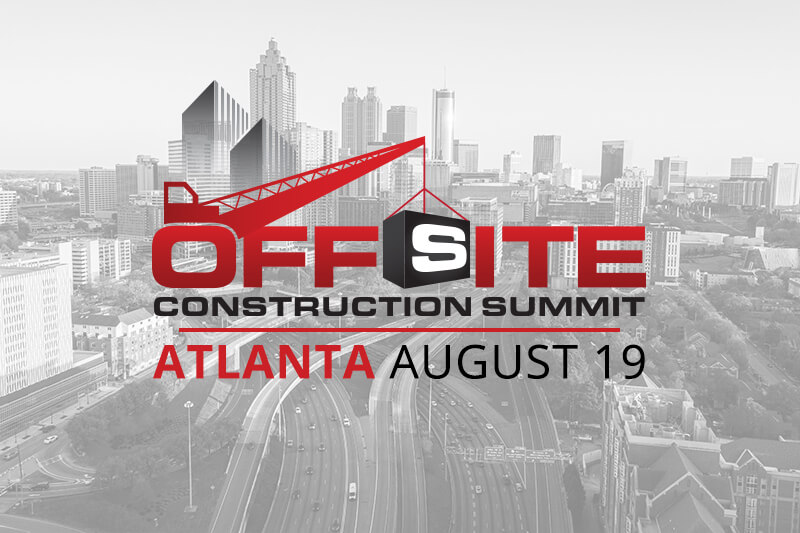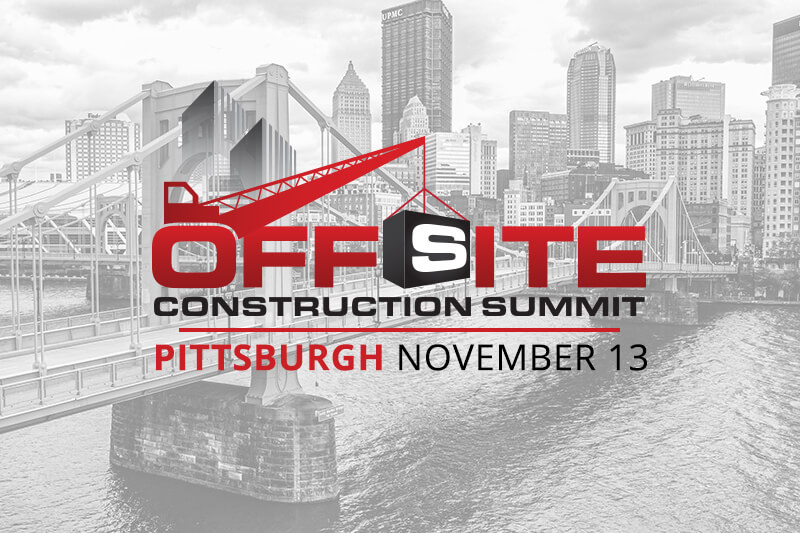Casata's Microhome Communities: Changing the Landscape of Affordable Housing
An exclusive article from the Offsite Construction Network
Most people choose between two common living options: buying or renting. Rentals are typically more affordable but may require tenants to share common spaces. On the flip side, houses are typically more expensive but can provide owners greater independence. Trouble is, with rising home prices and growing inflation, buying a traditional home can be a considerable financial challenge.
One company, Casata Corp., recently introduced a new living option: affordable microhome communities. The Texas-based company is bringing a fresh perspective to Austin’s residential real estate market, redefining what it means to live small.
Aaron Levy, co-founder and CEO of Casata, CEO of Townbridge and local Austinite, founded Casata two years ago. His goal was to develop single-family microhome rental communities for first-time homebuyers. The company's first community, Casata Austin, proved successful; already reaching full capacity.
Here’s what to know about Casata, its microhome communities, details regarding its partnership with nVolve Technologies, and what the future may hold.
Levy's Mission With Casata
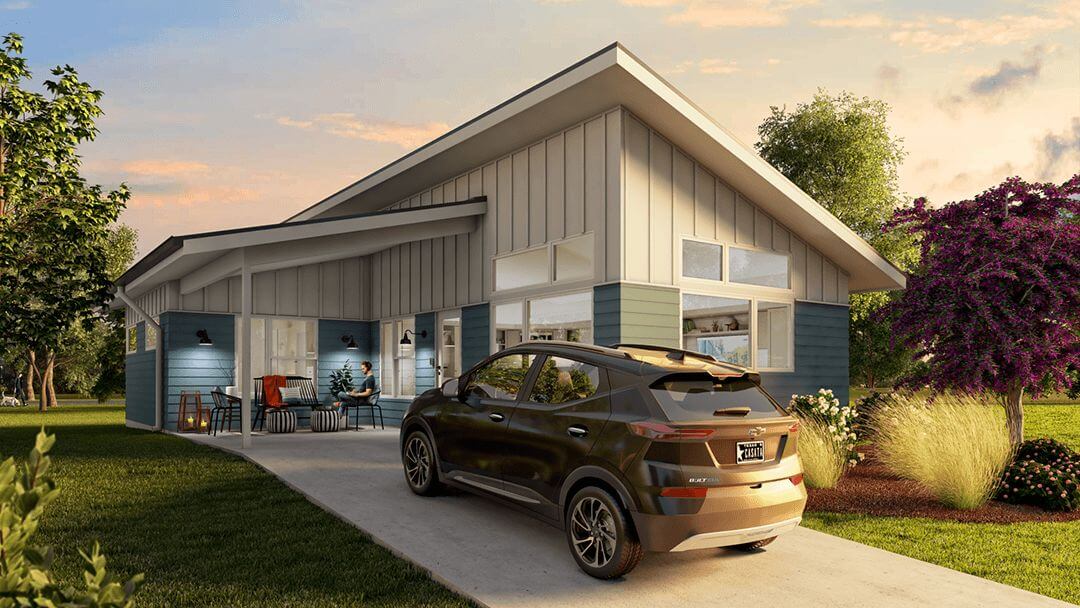
Casata's primary mission is to shake up the residential real estate market by changing how communities are built physically and socially. These small-scale microhome communities encourage homeowners to focus more on life experiences instead of material things, such as spacious homes and unnecessary luxuries.
Levy believes that, “post-COVID-19, there’s a real starvation for community and connection.” In the post-pandemic era, residents of Casata communities have opportunities to experience a mixture of community living and individualism. This lifestyle allows them to focus on building positive connections with neighbors and is accomplished by participating in social events.
The Importance of Educating People About Microhome Communities
The concept of the microhome is still relatively new, especially compared to the tiny home movement, which has grown steadily over the past few decades. Any new trend in home ownership takes some time to gain traction.
However, the housing market in Austin is reportedly reaching pre-pandemic levels, meaning the number of listings is increasing. This also means home prices will continue to rise. As a result, microhome communities might come to the forefront of Austin’s housing market due to their affordability.
Levy suggests it’s essential to educate potential homebuyers in the area and beyond about what it’s like to live in a microhome community. While many people are familiar with the tiny, or small, home movement, there’s still a lack of awareness surrounding microhome living.
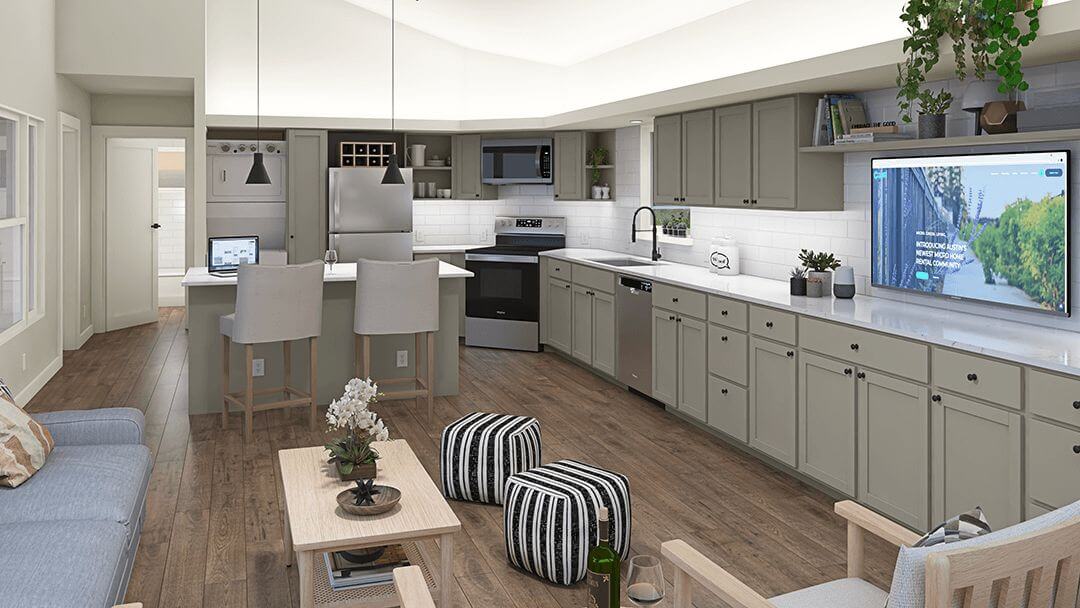
Tiny homes and microhomes share similar characteristics, but the terms should not be used interchangeably. The main differences between the two types of homes, as outlined by Levy, are:
- Microhomes are built to meet actual residential codes, depending on the jurisdiction. They can be placed anywhere in a standard zoning district, must provide ADA accessibility and compliance and are built on a permanent foundation, so they often stay in place.
- Tiny homes are built to RVIA standards, must be on wheels and be less than 400 square feet. Tiny homes, also referred to as manufactured mobile homes, are built to HUB certification.
When potential homebuyers hear “manufactured mobile home,” they most likely think of low-income homes. Casata focuses on building prefabricated microhomes, which are not considered low-income.
Levy suggests that more education about microhome communities is necessary if they want to expand and develop more communities, especially outside his home state of Texas. “The industry isn’t caught up and … the technology in which people manufacture is an obstacle right now,” says Levy.
The Company’s First Community, Casata Austin, and the Reaching the Desired Target Audience
Casata’s first community is called Casata Austin, located in South Austin near several grocery stores, health care facilities, coffee shops, retail stores, restaurants, fitness centers and more. Casata Austin announced its homes were full on Aug. 12 and would start adding interested homebuyers onto a running waitlist.
According to Levy, Casata communities target millennials and Gen Zers, who typically cannot afford or don’t want to spend money on traditional homes. However, Casata residents fall between the ages of 22 and 74 and earn an average annual income of $55,000. Levy suggests that Casata communities are perfect solutions for young buyers in the middle market.
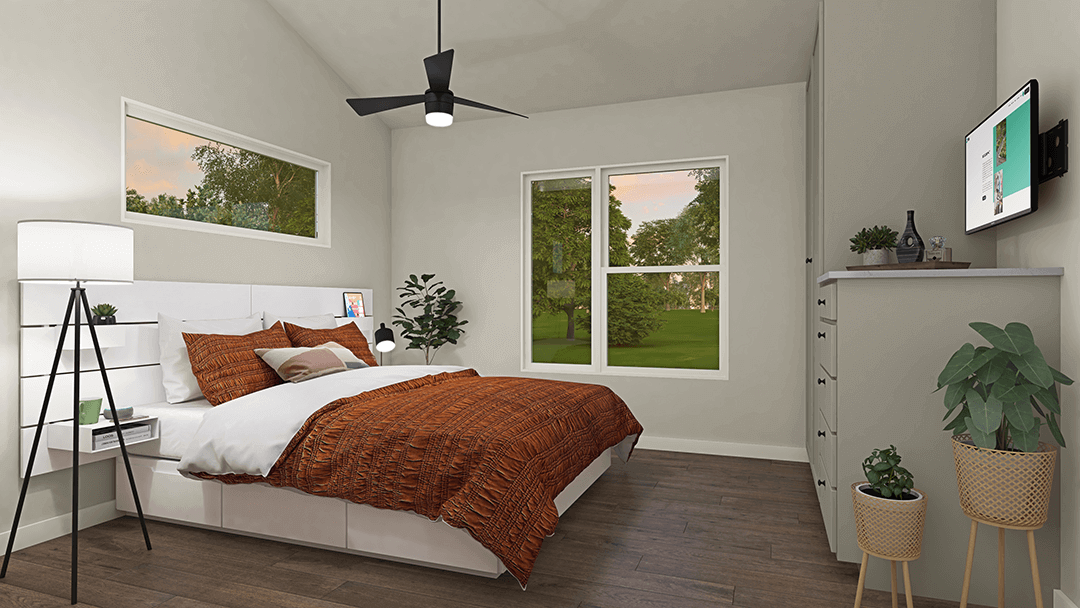

Design and Development of Casata Microhomes
Levy and the rest of the Casata team utilized modular construction, a popular trend in homebuilding, to develop its first community. This is the process of producing standardized building components in an off-site factory and assembling them on-site.
Casata formed a partnership with Champion Homes, one of North America's largest builders of modular and manufactured houses. According to Levy, the pairing allowed them to make as many alterations to off-shelf products as possible. Casata started with 10 microhome design concepts but eventually narrowed it down to six.
Levy has over 13 years of experience in residential homebuilding and design, which proved useful during the community’s early stages of development. Levy wanted Casata’s microhomes equipped with the latest technology to optimize space, understand water consumption and monitor efficiency.
Levy states that moving forward, Casata will likely focus on building more relationships with manufacturers to improve its products and gain assistance with design and decision-making.
Casata’s Partnership With nVolve Technologies
Casata’s partnership with nVolve Technologies has also proved beneficial. One of nVolve’s products is a structural insulated panel solution assembled on-site.
Casata gives nVolve design ideas, which nVolve incorporates into functional final products. nVolve is helping Casata build around 1,000 units for its upcoming projects. Casata is expected to break ground in San Marcos and work on entitlements for projects in College Station, Houston, Bastrop, Wimberley, Fort Worth and San Antonio.
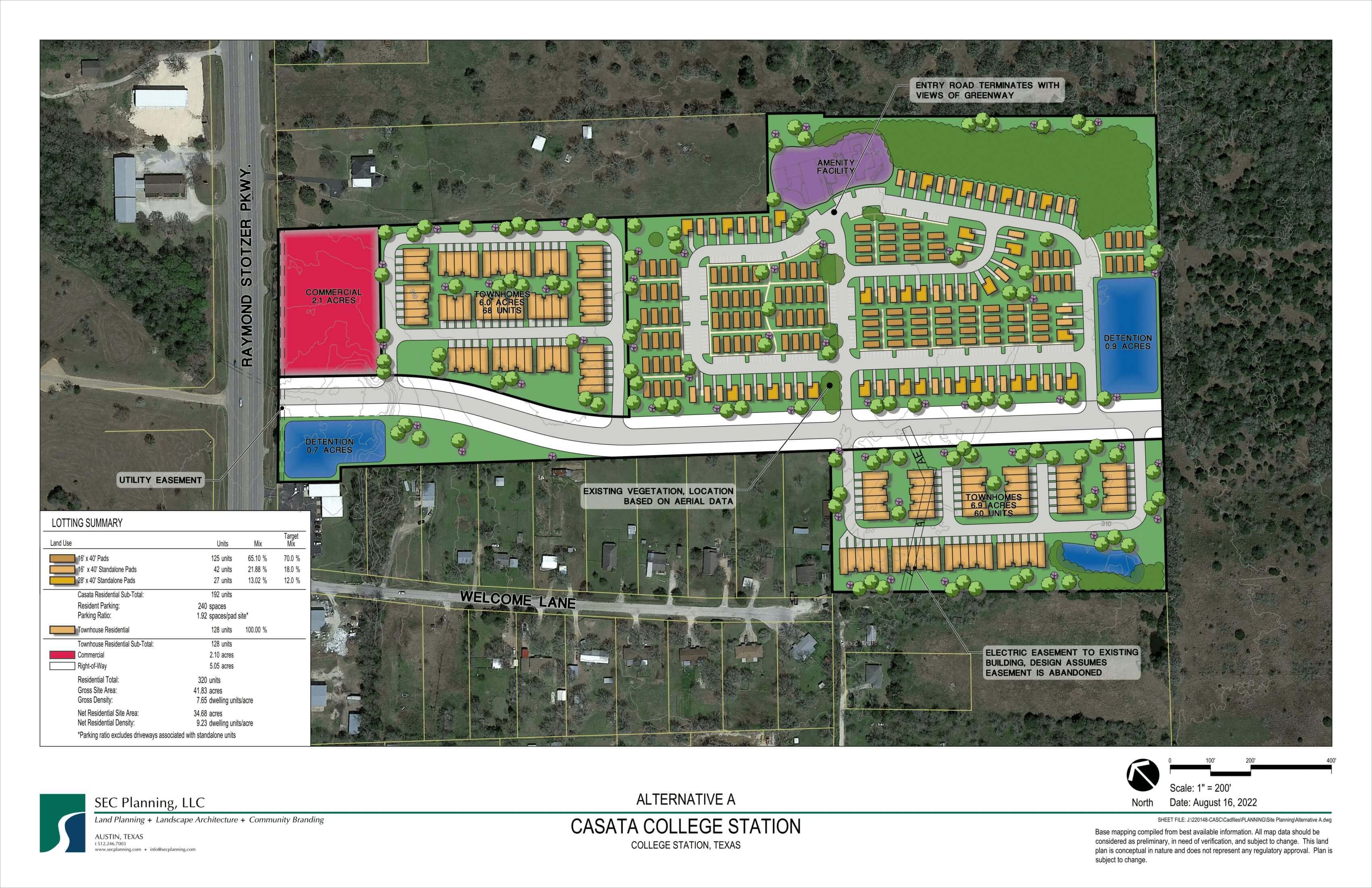
What Residents Can Expect From a Casata Microhome
Casata offers microhomes ranging from one to three bedrooms and either one or two bathrooms. They’re typically between 380-900 square feet, but Levy states that a microhome’s square footage can increase to 1,000 square feet.
Casata’s microhomes feature standard kitchen appliances and built-in storage in common areas and bedrooms. There are also living room cabinets and dressers. The company wants to ensure homeowners have the right amount of space for essential items but not so much as to fill them with unnecessary things. Residents can choose which style of microhome they prefer, whether it’s Juno, Aldrin, Stella or Orion.
The homes are stick-built, using alternative materials with noncombustible solutions. All the houses look the same but could vary in performance data. So far, the Casata microhomes consume 40% less water and use 20% less electricity compared to residences in other communities with an equal number of units. Levy states that the company is constantly running surveys and gathering data on the performance of the community’s microhomes.
The microhomes are organized in a pedestrian cluster. Residents drive up to a parking lot and access a group of units. There are plenty of opportunities for residents to engage with each other, including a nearby dog park and firepit along the way. These homes have front porches and patios to engage directly with neighbors. Residents also have their own personal driveways for individual parking.
Every feature of a Casata microhome reiterates the company’s overall mission of challenging the status quo. Residents in these communities get much more out of their living experiences compared to those dwelling in shared apartments or expensive homes. Any time an industry player makes a sizable impact in the market, especially in the way Casata has, homeowners are more inclined to take new trends into account when searching for their next living option
Casata Focuses on Minimizing the Environmental Impact of Homebuilding and Community Operations
During the building process, Casata’s team works with existing trees and topography to minimize the impact on the natural environment and lessen waste.
Casata is an ESG-oriented company, meaning it focuses on making sustainability a top priority in its products, and also in its future community development and engagement. Casata communities are designed with sustainability and economic and human well-being in mind.
On Casata’s homepage, the company explains some other sustainable aspects of living in one of its communities, including:
- Units waste little water
- Electric vehicle charging stations
- Electric scooters and bikes for local exploration
- Open greenspaces for community events and fresh air
All of these elements in Casata communities allow residents to reduce their carbon footprints and engage with other like-minded individuals looking to do the same.
Casata’s Future Plans and Projects
What does the future look like for Casata and its modern microhome communities?
The company is working to increase its presence in the Sunbelt, including Colorado, New Mexico, and Arizona, throughout 2024 and beyond. Casata’s sister company, Townbridge, will likely assist with various aspects of construction and bring other lifestyle elements to the communities.
Ultimately, Casata wants to focus on being a middle-market housing solution. It may also expand into providing luxury solutions for mature audiences. The company could explore opportunities in corporate housing solutions, working with other major manufacturers or developing commercial spaces for events, farmers markets or other social activities.
About the Author: Rose Morrison is a freelance writer and designer with a background in construction You can contact her at rose@renovated.com.
Don't Miss Our Upcoming Events!
Join the leading companies and professionals from across the offsite construction industry at each of this year's Offsite Construction Network events. With summits and expos taking place across North America in 2025, it's never been easier to connect with and learn from offsite construction manufacturers, designers, builders, and suppliers from the United States and Canada.
Subscribe today to get the latest updates on future events from the Offsite Construction Network.

